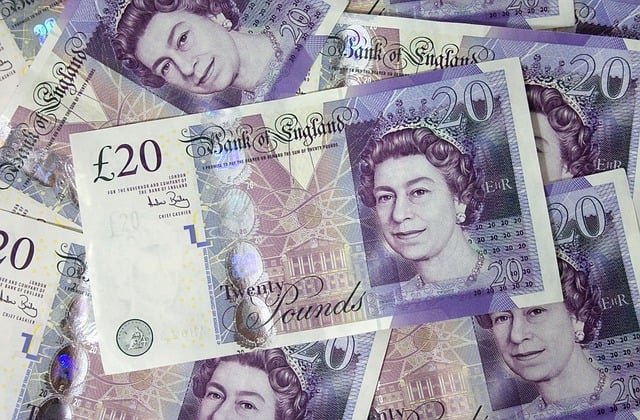The British pound continued its winning streak on Tuesday, climbing to $1.342 against the US dollar—its strongest level since September.
Sterling has risen against the dollar for the last 10 days, gaining around six cents since early April. If it posts an 11th gain today, it’ll be the longest run of daily rises since 1971, Bloomberg said.
The surge comes as the US dollar weakens amid heightened political pressure on the Federal Reserve.
Markets have reacted sharply to renewed attacks by former President Donald Trump, who has intensified his calls for lower interest rates and hinted at efforts to remove Fed Chairman Jerome Powell.
Trump’s comments have reignited investor concerns about the central bank’s independence and added fresh layers of uncertainty to an already fragile global outlook.
Trump renews pressure on Powell over monetary policy
Copy link to section
On Monday, Trump lashed out at Powell for his continued “wait and see” stance on monetary easing, warning that failure to cut rates could trigger an economic slowdown.
Writing on TruthSocial, Trump said, “There can be a SLOWING of the economy unless Mr. Too Late, a major loser, lowers interest rates, NOW.”
The remarks followed an earlier threat to sack Powell, with Trump saying, “I am not happy with him. If I want him out of there, he’ll be out real fast, believe me.”
The rhetoric has alarmed investors and economists alike, many of whom view central bank independence as a cornerstone of financial stability.
The US Dollar Index (DXY), which tracks the greenback against six major peers, dropped to a three-year low near 98.00 on Tuesday.
Analysts say the dollar’s fall reflects deepening concerns that the Fed may be pressured into premature rate cuts, potentially destabilising financial markets.
Speculation mounts over Powell’s next move
Copy link to section
While an emergency rate cut remains unlikely, analysts are closely watching the Fed’s response.
Francesco Pesole, FX strategist at ING Think, noted that “there is a good chance Trump won’t—or won’t be able to—take any drastic measures, and Powell will stand his ground.”
Still, Pesole added that the political pressure could intensify, especially given forecasts of softer economic data.
The OIS curve continues to price in minimal chances of a rate cut in May.
Nonetheless, traders remain cautious, especially in light of Trump’s recent attempts to shift blame for a potential economic slowdown onto the Fed—a signal, some argue, that the administration acknowledges looming recession risks.
UK outlook clouded by global tensions and soft inflation
Copy link to section
While sterling has gained on dollar weakness, its broader performance remains mixed amid growing concerns about the UK’s economic direction.
The Bank of England (BoE) faces increasing pressure to adjust its monetary policy as inflation data cools and international trade dynamics shift.
UK Consumer Price Index (CPI) data for March came in softer than expected, with services inflation rising 4.7%—down from February’s 5%.
The moderation has fuelled expectations that the BoE may consider a rate cut at its May meeting, particularly as broader global economic tensions intensify.
Adding to the complexity are rising trade frictions.
Trump’s imposition of 10% reciprocal tariffs and 25% levies on steel and foreign cars has sparked fears that British exporters could face fiercer competition as displaced goods flood other markets.
The BoE’s Financial Policy Committee warned last month that major changes in global trade arrangements could weaken financial stability by hampering growth.
BoE policymakers divided over inflation risks
Copy link to section
BoE policymaker Megan Greene, speaking to Bloomberg TV on Tuesday, acknowledged that while services inflation remains a concern, tariffs are likely to be disinflationary in effect.
“Tariffs actually represent more of a disinflationary risk than an inflationary risk,” she said, adding that there are no signs of significant labor market stress.
At the same time, some market participants have begun pricing in the likelihood of a rate cut in the UK, especially as higher employer contributions to social security take effect and job posting activity slows.
Technical analysis: pound Sterling holds gains near 1.3400
Copy link to section
In the near term, investor attention will turn to the release of preliminary S&P Global/CIPS Purchasing Managers’ Index (PMI) data for April, as well as UK Retail Sales figures for March, due later this week.
Both sets of data will be closely watched for signs of economic resilience or weakness that could influence the BoE’s decision-making.
On technical fronts, the GBP/USD pair continues to show strong bullish momentum, with all short-to-long term Exponential Moving Averages sloping upward, according to analysts at FXStreet.

Source: FXStreet
The 14-day Relative Strength Index has moved above 70, suggesting overbought conditions and raising the possibility of a near-term correction, the analysts said.
Still, with the dollar under pressure and global markets on edge, sterling could extend its gains toward the psychological level of 1.3500.
Support is expected around the April 3 high of 1.3200, offering a cushion should volatility surge in response to data surprises or further political developments from Washington.
In the meantime, traders are bracing for elevated currency market swings as the interplay of political rhetoric, monetary policy speculation, and global economic signals continues to drive sentiment.
